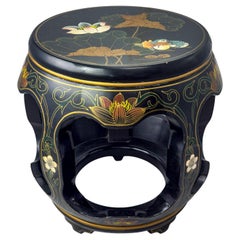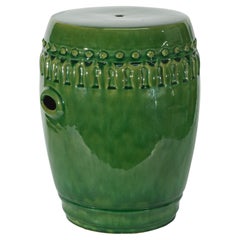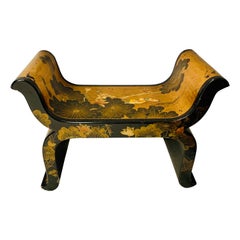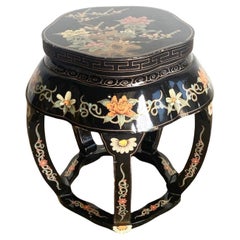Chinese Black Chinoiserie Stools
Late 20th Century Chinese Chinese Export Stools
Wood, Giltwood, Paint
20th Century Chinese Chinoiserie Furniture
Ceramic, Porcelain
Recent Sales
Mid-20th Century Chinese Chinoiserie Stools
Gold Leaf
20th Century Chinese Chinoiserie Stools
Lacquer
Late 20th Century Chinoiserie Coffee and Cocktail Tables
Elm, Lacquer
Vintage 1950s Chinese Chinoiserie Stools
Silk, Wood
20th Century Chinese Chinoiserie Patio and Garden Furniture
Ceramic, Paint
Early 20th Century Chinese Chinoiserie Lacquer
Metal
Late 20th Century Chinese Chinoiserie Coffee and Cocktail Tables
Soapstone
20th Century Chinese Chinoiserie Furniture
Mother-of-Pearl, Wood, Lacquer
Vintage 1970s Chinese Chinoiserie Stools
Pottery
People Also Browsed
20th Century American Mid-Century Modern Center Tables
Glass, Wood, Rattan
Vintage 1970s Italian Mid-Century Modern Floor Lamps
Marble, Metal, Brass
Mid-20th Century American Hollywood Regency Floor Lamps
Brass
21st Century and Contemporary Asian Qing Side Tables
Fir
Mid-20th Century American Louis XV Desks and Writing Tables
Bronze
20th Century American Organic Modern Dining Room Tables
Iron
Vintage 1960s Chinese Chinese Export End Tables
Ceramic
Antique 19th Century Chinoiserie Desks
Lacquer
Vintage 1970s American Daybeds
Leather
Mid-20th Century Mid-Century Modern Wall Mirrors
Glass, Walnut
Late 20th Century Chinese Chinese Export Side Tables
Wood, Lacquer
Vintage 1930s Chinese Hollywood Regency Stools
Terracotta
Mid-20th Century Chinese Mid-Century Modern Dry Bars
Rosewood
Late 20th Century Chinese Chinese Export Lounge Chairs
Stone
Mid-20th Century Dining Room Tables
Rattan
20th Century American Mid-Century Modern Desks and Writing Tables
Leather, Hardwood
A Close Look at Chinoiserie Furniture
Emerging in the 17th century, chinoiserie appropriated the aesthetics and imagery of popular East Asian design for European-made versions. Reflecting the exoticization of China, Japan and other countries in this era, the word directly translates from French to “Chinese-esque,” which reveals its shortcomings as a style of furniture and decor that often stereotypically and reductively mimics Asian culture rather than showcasing and paying tribute to its artistic traditions.
The enthusiastically decorative chinoiserie style was propelled by influential tastemakers including French King Louis XIV, whose Trianon de Porcelaine in 1670 was inspired by Chinese architecture. Expanded trade between the East and West led to a demand for porcelain, lacquer objects, silk and other goods, which further informed the fanciful furniture being crafted in Europe.
Artisans working in the chinoiserie style used materials and elements like pagoda shapes, bamboo, lacquer surfaces, bird and flower motifs and other interpretations of Asian design on pieces that were frequently set against vibrant wallcoverings. This whimsical approach yielded chinoiserie furniture that boasted dramatic flourishes drawing on the natural world and reflected the dominance of Rococo during the 18th century.
As chinoiserie was shaped by approximations of Asian design by European creators, it had regional variations, such as Chinese Chippendale in England where cabinets, chairs and tea tables had wooden fretwork designs and “japanned” surfaces intended to resemble lacquer work that was created in East Asia. In North America, furniture makers in Boston and New York integrated chinoiserie-painted scenes into Queen Anne furniture.
Antique chinoiserie furniture has continued to be fashionable, from its popularity with decorators of the Hollywood Regency era — James Mont, Tommi Parzinger, William Haines and Samuel Marx favored the style — to contemporary interior designers, although it brings with it a complex history.
Find a collection of chinoiserie bedroom furniture, cabinets, decorative objects and more on 1stDibs.
Read More
Jackie Kennedy and Sister Parish Placed This Tea Table in the White House
The former First Lady kept the Victorian antique, with an elegant chinoiserie design, for the rest of her life.
Susanna Salk’s Favorite Designers Show Us How to Play with Patterns
Taking us on a whirlwind tour of spaces that use charming prints with aplomb, the interiors expert makes a compelling case for ditching staid solids when tackling your next decorating project.



